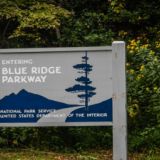Smoky Mountain Hemlock Trees
Smoky Mountain Hemlock Trees are receiving a lifeline.
Horticulturists hope a new hybrid hemlock will prove resistant to the hemlock woolly adelgid which has decimated the broadleaf evergreens for more than 25 years.
The majestic trees, which serve as green sentinels in the Great Smoky Mountains punctuating the summer mountains scenery with dark green foliage and offering a welcome contrast to leafless trees in the winter, have been slowly dying in the mountains for 25 years.
The culprit is the hemlock woolly adelgid, a small white fuzzy insect, which arrived from East Asia some 70 year ago and has spread widely during the past few decades. The pest feeds on the tree’s sugary sap. The tree’s defensives mechanism reacts to the feeding by shutting off affected areas and when enough infestation is present the tree literally goes into a death spiral.
Beloved by home landscapers for its large growth and attractive fine texture Hemlocks are one of the few evergreen conifers that does not crave sunlight. The tree lends itself to formal clipped hedges and provides structure and screening to home gardens.
According to a report, breeders at the Agricultural Research Service in Beltsville, Maryland have worked for almost 20 years to produce a cross between the Carolina Hemlock and the Chinese hemlock that is tolerant of the pest. Dubbed “Traveler,” the breeders think that nurseries will be interested in growing the tree and that it can reach consumers in a few years. The Traveler hybrid, from which all future clones will be made, has topped out at 30 feet with an 18-ft. girth in a little more than 15 years. Resembling a deodar cedar, the relatively slow growing hybrid, features lime-green cones and pendulous branch tips.
The task has proved challenging said Margaret Pooler, the project’s research leader, who was quoted as saying that repeated efforts to cross the Chinese species with the eastern hemlock proved fruitless. She noted that there are very few Chinese hemlocks available. The mother tree to Traveler is a Chinese hemlock growing the U.S. National Arboretum and sourced from a Pennsylvania conifer arboretum in 1959 from trees originally brought from China. The second parent was from a now-dead Carolina hemlock found in the estate of plant explorer David Fairchild (1869-1954.
Hemlocks are wind-pollinated and tracking the thousands of seedlings, which require a DNA test to determine if they are hybrids, is difficult. The seedlings are also tested to determine growth habits and adelgid resistance.
Although the research is promising for home landscapers it is not the solution for restoring native populations. The hybrid clonesn lack the genetic diversity needed in a wild population. There is, however, a glimmer of hope. Using cuttings from rare survivors in the wild, which have innate resistance to the pest plant, scientists at the University of Rhode Island are working to restore the native tree. According to Evan Preisser, a professor in the university’s biological science department, a four year trial in seven states determined that only 4% have died, compared with 52% of control specimens.
The findings provide a strong argument for reforesting areas with resistant trees but it will take time, said Preisser who added that it took Asian species of hemlock some 100,000 years to evolve and build up a resistance to the adelgid. “We are trying to speed up that process,” he said.
This research provides hope for the iconic hemlocks.












